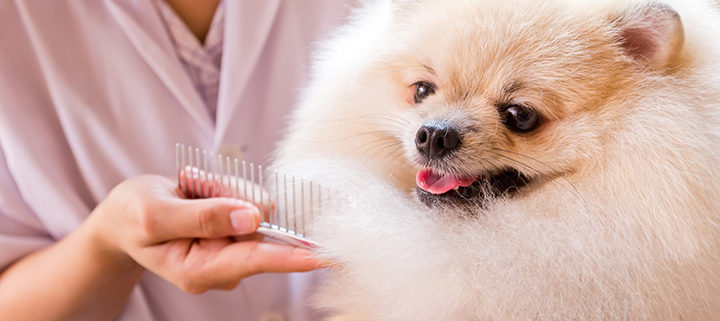How Much Do Franchise Owners Make?
In the franchise world, it is the question on everyone’s mind, “how much do franchise owners make?” Answering that question is not easy. Reputable franchisors typically do not disclose this information. This protects themselves and franchisees from litigation. If a franchisor promises a specific figure and the franchisee is unable to make this figure, then the franchisor is subject to a lawsuit. For this reason, franchisors will point to item 19 of the FDD (franchise disclosure document).
Item 19 of the FDD delineates financial performance of the franchise and offers a glimpse of the average revenue a franchisee can make. Item 19 is also called Financial Performance Representations (FPR). Many times there is such a wide range offered in the FPR ($50,000-$500,000) that item 19 is a relative number. This is why some franchisors decide not to include item 19 since filling out the item is optional.
Understanding how much you can make as a franchise owner is situational. However, there is some insight into typical franchise owner salaries. It’s important to note that this information is incredibly vague. There are hundreds of business concepts in the franchise industry with varying operational costs and revenues.
Breaking Down the Figures
So, is there a conclusive way of answering how much do franchise owners make? A few research firms have attempted to crunch the numbers and supply a definitive figure. Franchise Business Review analyzed data from 28,500 franchisees surveyed, finding the average annual pre-tax income to float around $80,000. Take this number with a grain of salt. A small number of top-performing franchises can artificially inflate this end figure. After compensating for artificial inflation, the average annual pre-tax income for the same group of franchisees was actually under $50,000. The same report showed that 51.5% of franchises earn profits of less than $50,000 a year while 7% earned upward of $250,00 a year. This reinforces the idea that individual success is contingent on how hard each franchise owner works.
Quick-service restaurants comprise 20.8% of the franchise industry. A restaurant franchise owner makes on average $82,033 a year, according to the FBR. Restaurants usually have the highest startup costs but at the same yield some of the highest returns. A well-established restaurant brand might require anywhere from $100,000 to $500,000 in initial costs. A well-established brand can cost up to $1 million. These startup costs also come into play in deciphering how much a franchise owner can make. Return on investment (ROI) is dependent on these startup costs. Items 5, 6, and 7 of the FDD disclose these initial startup fees. Costs for royalties, advertising, and equipment purchasing will be listed here. Another thing to take into consideration is expansion. A franchise owner who owns a dozen McDonald’s is going make more than an owner of a single restaurant.
Many franchisors have guidelines that set their franchisees up for financial success. By regulating franchise owner tactics, the franchise as a whole can profit. Operation policies, territory, and use of trademark are controlled by the franchisor. This control is for the benefit of the franchisee. For instance, Splash and Dash Groomerie & Boutique aims for franchisees to break even within six months. The pet franchise strives to accomplish this with proven tactics. Maximizing profitability means focusing on three business segments–labor, rent, and cost of products sold. Franchise owners keep their overhead low by optimizing these areas. Marketing, location, and price-points all usually have guidelines or restrictions in place from the franchisor. These regulatory methods are put in place to help guide a franchise owner to succeed.
How Much can a Pet Franchise Owner Make?
The truth is franchise ownership is circumstantial but not completely arbitrary. The financial success of a franchise owner is contingent on how hard each owner works. The key to operating a lucrative franchise is favorable marketplace conditions. A franchise with a unique business model, recurring revenue, and firm hold in a recession-proof industry that is growing has favorable variables for financial success.
Splash and Dash Groomerie & Boutique owners benefit from low startup costs and a niche in a booming industry. The company’s business model focuses on uniqueness. Splash and Dash is the only pet franchise to offer a membership program. With this program, customers benefit from convenience, while owners benefit from a recurring revenue stream. On top of this, owners provide eco-friendly and holistic retail options for their customers. This niche-focus gives franchise owners an advantage over big-box stores that don’t offer these products. Also, each Splash and Dash owner is empowered with proprietary software. This software handles all operational tasks of owning a pet franchise. This software was specifically developed for this need.
The pet industry has been growing for the last three decades. In 2016, the 65% of U.S. households that own a pet spent $66.75 billion dollars on their pets. New markets are opening in upscale retail storefronts, all-natural pet food, and human spa-quality services. Of course, people want the best for their pets and consumer demand is showing this view. This is driving the financial success of retail pet spa franchises like Splash and Dash Groomerie & Boutique.
Discovering the answer to, “how much do franchise owners make” is an elusive number. Those interested in owning a franchise should do their homework. Conduct extensive research into the franchise business concept and industry you plan on investing in. Make sure you are comfortable in buying a franchise. Finding the right franchise fit could mean the difference between a failed small business or owning a thriving franchise.
Good luck!
Follow Splash and Dash Groomerie & Boutique:
- Website: http://splashanddashfordogs.com/
- Website: https://splashanddashfranchise.com/
- Facebook: https://www.facebook.com/splashanddashfordogs/
- Instagram: @splashanddashfordogs
- LinkedIn: https://www.linkedin.com/in/dan-j-barton-622ab517
- Twitter: splashanddash4dog



